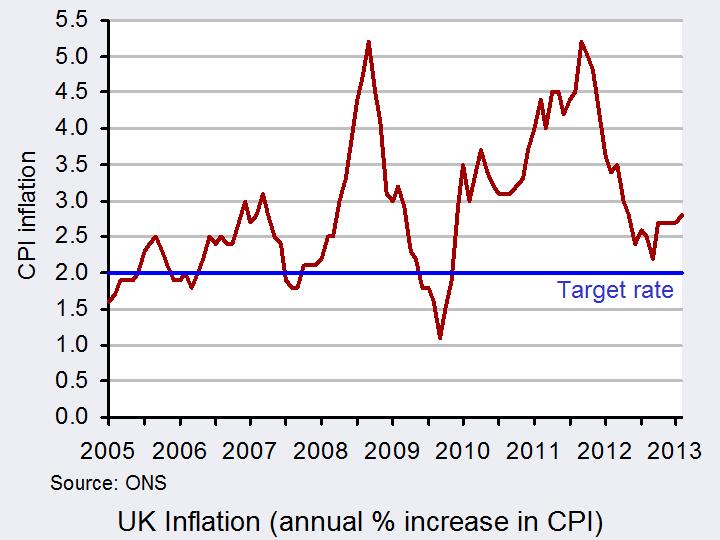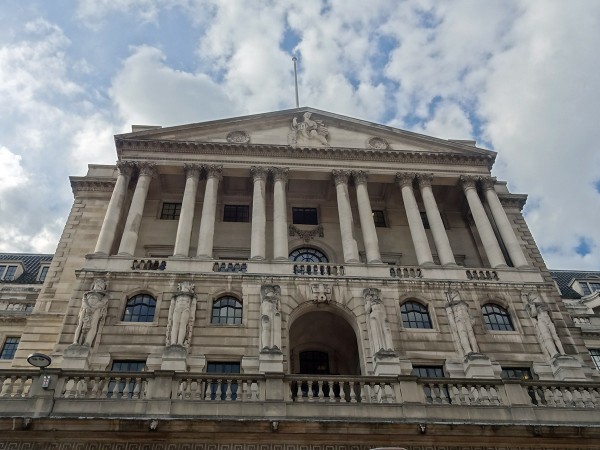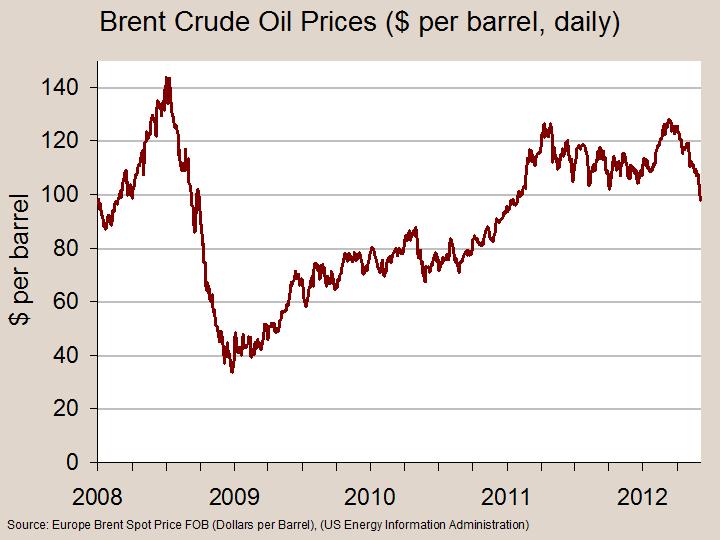 The Bank of England was granted independence to set interest rates back in 1997. This is known as instrument independence. However, the remit is set by the government and so it does not have goal independence. Amongst the policy announcements on Budget day (Wed 20 March), the government detailed amendments to the Bank’s remit. In particular, the remit now more explicitly acknowledges that, in exceptional circumstances, the Bank might need to pay more attention to output variability.
The Bank of England was granted independence to set interest rates back in 1997. This is known as instrument independence. However, the remit is set by the government and so it does not have goal independence. Amongst the policy announcements on Budget day (Wed 20 March), the government detailed amendments to the Bank’s remit. In particular, the remit now more explicitly acknowledges that, in exceptional circumstances, the Bank might need to pay more attention to output variability.
Despite the amendments to its remit, the Bank of England continues to have a forward-looking operational inflation rate target of 2 per cent (with a range of tolerance of up to 1 percentage point). The MPC therefore sets the Bank Rate, i.e. the rate at which it engages in short-term lending to financial institutions, to affect general interest rates in the economy. In turn, the level of interest rates is assumed to affect the level of aggregate demand and, hence, the rate of demand-pull inflation as well as inflation rate expectations.
A key economic benefit of delegating interest rate decisions to the Monetary Policy Committee (MPC) is thought to be lower inflation rate expectations. By granting the Bank of England operational or instrument independence, inflation announcements have a credibility that they would not if monetary policy was under the control of elected politicians. So why change the inflation rate remit?
 The government remains of the view that inflation rate targeting has served the UK well, despite inflation being persistently above target for the past three years (see chart: click here for a PowerPoint). However, it has sought to clarify how the Bank of England might be expected to behave in exceptional circumstances when the economy is buffeted by shocks and disturbances, such as those that it has faced following the financial crisis of the late 2000s. The government argues that in such circumstances the output volatility that could result by ensuring that inflation remains on target could be undesirable. Therefore, the MPC should give consideration to the volatility of output that targeting inflation would cause in such exceptional circumstances.
The government remains of the view that inflation rate targeting has served the UK well, despite inflation being persistently above target for the past three years (see chart: click here for a PowerPoint). However, it has sought to clarify how the Bank of England might be expected to behave in exceptional circumstances when the economy is buffeted by shocks and disturbances, such as those that it has faced following the financial crisis of the late 2000s. The government argues that in such circumstances the output volatility that could result by ensuring that inflation remains on target could be undesirable. Therefore, the MPC should give consideration to the volatility of output that targeting inflation would cause in such exceptional circumstances.
The amended remit says that in setting monetary policy the MPC should communicate to the public the trade-offs that are inherent in meeting its forward-looking inflation rate target. Therefore, during exceptional times, the Bank may communicate that the volatility of output resulting from returning inflation to target would be so large that it is prepared to keep monetary policy looser than it otherwise would. This could mean indicating a time-frame over which it would be expected to keep interest rates lower than otherwise. By communicating this, it would in effect be looking to affect peoples’ expectations and, importantly, their behaviour. The prospect of prolonged low interest rates, such as those currently being experienced, might encourage greater expenditure, especially as a result of lower borrowing costs – though of course this is not guaranteed!
 The Governor will continue to write an open letter to the Chancellor of the Exchequer if inflation moves away from the target by more than 1 percentage point in either direction. However, in a change to the previous remit, this will be done in conjunction with the minutes of the MPC meeting that follow the publication of the official inflation figures by the Office for National Statistics. By publishing the letter alongside the minutes, it gives the MPC more time to consider its strategy and to give due consideration to the trade-offs in returning inflation to the target. If inflation remains more than 1 percentage point above or below the target the Governor will need to write a further letter after three months. This letter would be alongside the minutes of the third subsequent meeting of the MPC.
The Governor will continue to write an open letter to the Chancellor of the Exchequer if inflation moves away from the target by more than 1 percentage point in either direction. However, in a change to the previous remit, this will be done in conjunction with the minutes of the MPC meeting that follow the publication of the official inflation figures by the Office for National Statistics. By publishing the letter alongside the minutes, it gives the MPC more time to consider its strategy and to give due consideration to the trade-offs in returning inflation to the target. If inflation remains more than 1 percentage point above or below the target the Governor will need to write a further letter after three months. This letter would be alongside the minutes of the third subsequent meeting of the MPC.
Some commentators argue that the amended remit is merely a reflection of the current reality. In other words, the remit is being rewritten in a way which reflects how the MPC is currently making its interest rate decisions. Others are concerned that what was a simple and clear objective is now not the case and that this may have implications for the credibility of monetary policy. Whatever the rights and wrongs, Wednesday’s announcement was an important development in the history of central bank independence in the UK.
Documents
Remit for the Monetary Policy Committee Bank of England, March 2013
Governor Response to the remit for the Monetary Policy Committee Bank of England , March 2013
Articles
Bank of England handed new remit in Osbourne’s budget Guardian, Josephine Moulds (20/3/13)
Budget: Changing the Bank of England Remit Sky News, Ed Conway (20/3/13)
Budget 2013: Bank of England’s monetary policy remit changed Telegraph, Angela Monaghan (20/3/13)
King warns against ‘major change’ to Bank’s remit ITV News (15/3/13)
Chancellor adjusts Bank of England inflation remit Financial Times, Nick Reeve (20/3/13)
Budget 2013: Bank of England gets new orders BBC News (20/3/13)
Questions
- Why would monetary policy be expected to be more credible under an independent central bank?
- How might a lack of credibility over monetary policy affect the economy’s rate of inflation?
- Outline the advantages and disadvantages of the changes to the Bank of England’s remit.
- Central bank independence constrains discretion over monetary policy. Should governments constrain their discretion over fiscal policy? What are the advantages and disadvantages?
- Explain how the MPC tries to affect the rate of inflation through changes in the Bank Rate?
 Oil prices have been falling in recent months. By early June they had reached a 17-month low. The benchmark US crude price (the West Texas Intermediate price) fell to $83.2 at the beginning of the month, and Brent Crude (the North Sea reference price for refining into petrol) fell to $97.7 (see chart). (For a PowerPoint of the chart below, click here.)
Oil prices have been falling in recent months. By early June they had reached a 17-month low. The benchmark US crude price (the West Texas Intermediate price) fell to $83.2 at the beginning of the month, and Brent Crude (the North Sea reference price for refining into petrol) fell to $97.7 (see chart). (For a PowerPoint of the chart below, click here.)
At the same time various commodity prices have also been falling. The IMF all commodities price index has fallen by 7.2% over the past 12 months and by 6.2% in May alone. Some commodities have fallen much faster. In the 12 months to May 2012, natural gas fell by 44%, wheat by 25%, lamb by 37%, Arabica coffee by 36%, coconut oil by 45%, cotton by 47%, iron ore by 23% and tin by 29%.
Although part of the reason for the fall in the price of some commodities is increased supply, the main reason is weak world demand. And with continuing problems in the eurozone and a slowdown in China and the USA, commodity price weakness is likely to continue.
 So is this good news? To the extent that commodity prices feed through into consumer prices and impact on the rate of inflation, then this is good news. As inflation falls, so central banks will be encouraged to make further cuts in interest rates (in the cases where they are not already at a minimum). For example, the Reserve Bank of Australia cut its cash rate last week from 3.75% to 3.5%. This follows on from a cut from 4.25% on 1 May. In cases where there is no further scope for interest rate cuts (e.g. the US Federal Reserve Bank, whose interest rate is between 0% and 0.25%), then the fall in inflation may encourage a further round of quantitative easing.
So is this good news? To the extent that commodity prices feed through into consumer prices and impact on the rate of inflation, then this is good news. As inflation falls, so central banks will be encouraged to make further cuts in interest rates (in the cases where they are not already at a minimum). For example, the Reserve Bank of Australia cut its cash rate last week from 3.75% to 3.5%. This follows on from a cut from 4.25% on 1 May. In cases where there is no further scope for interest rate cuts (e.g. the US Federal Reserve Bank, whose interest rate is between 0% and 0.25%), then the fall in inflation may encourage a further round of quantitative easing.
But falling commodity prices are also a reflection of bad news, namely the low economic growth of the world economy and fears of turmoil from a possible Greek exit from the euro.
Update
A day after this was written (9/6/12), a deal was agreed between eurozone ministers to provide support of up to €100 billion for Spanish banks. This helped to reduce pessimism about the world economy, at least temporarily. Stock markets rose and so too did oil prices, by around 1%. But if pessimism increases again, then the fall is likely to resume.
Articles
Oil prices hit a 17-month low on China slowdown fears BBC News (8/6/12)
Oil gives up gains without signs of Fed move BloombergBusinessweek, Sandy Shore (7/6/12)
Oil Heads for Longest Run of Weekly Losses in More Than 13 Years BloombergBusinessweek, (8/6/12)
Gold plunges as Bernanke gives no hint of stimulus Live5News(7/6/12)
Oil Price Tumbles Below $83 on Weak Economy Money News(8/6/12)
World food price index expected to fall for May Reuters(6/6/12)
Oil price losing streak continues Guardian, Julia Kollewe (8/6/12)
Data
Spot fuel prices US Energy Information Administration
Commodity Prices Index Mundi
Crude Oil Price Index Index Mundi
Questions
- Why have crude oil prices fallen to their lowest level for 17 months?
- How can the concepts of income elasticity of demand, price elasticity of supply and price elasticity of demand help to explain the magnitude of the fall in crude oil prices?
- Would a fall in inflation linked to a fall in commodity prices be a fall in cost-push or demand-pull inflation? Explain.
- What are the macroeconomic implications of the fall in crude oil prices?
- What factors are likely to have significant impact on crude oil prices in the coming months
- Why is it difficult to predict crude oil prices over the coming months?
 Between December 2007 and March 2009, the Bank of England reduced Bank Rate on several occasions in order to stimulate the economy and combat recession. By March 2009, the rate stood at a record low of 0.5%. Each month the Monetary Policy Committee meets to decide on interest rates and since March 2009, the members’ decision has consistently been that Bank Rate needs to remain at 0.5%.
Between December 2007 and March 2009, the Bank of England reduced Bank Rate on several occasions in order to stimulate the economy and combat recession. By March 2009, the rate stood at a record low of 0.5%. Each month the Monetary Policy Committee meets to decide on interest rates and since March 2009, the members’ decision has consistently been that Bank Rate needs to remain at 0.5%.
Although the UK economy has been making tentative steps towards recovery, it is still in a very vulnerable state. Last month, the Bank of England extended its programme of quantitative easing to a total £325bn stimulus. This, together with the decision to keep interest rates down and with the shock fall in manufacturing output contributing towards first quarter growth of just 0.1%, is a key indication that the UK economy is still struggling, even though the central bank thinks it unlikely that the UK will re-enter recession this year.
Monetary policy in the UK has been very much geared towards stimulating economic growth, despite interest rates typically being the main tool to keep inflation on target at 2%. The problem facing the central bank is that economic growth and inflation are in something of a conflict. Low interest rates to stimulate economic growth also create a higher inflation environment and that is the trade-off the economy has faced. Inflation has been well above its target for some months (a high of 5.2% in September 2011), and the low interest rate environment has done little to deflate the figure. After all, low interest rates are a monetary instrument that can be used to boost aggregate demand, which can then create demand-pull inflation. However, inflation is now slowly beginning to fall, but this downward trend could be reversed with the sky high oil prices we are recently experiencing. If inflation does begin to creep back up, the Monetary Policy Committee will once again face a decision: keep Bank Rate low and continue with quantitative easing to stimulate the economy or increase Bank Rate to counter the higher rate of inflation.
The data over recent months has been truly inconsistent. Some indicators suggest improvements in the economy and the financial environment, whereas others indicate an economic situation that is moving very quickly in the wrong direction. A key factor is that the direction the UK economy takes is very much dependent on the world economy and, in particular, on how events in the eurozone unfold. The following articles consider some of the latest economic developments.
UK economy grew 0.1% to avoid recession, says NIESR Guardian, Katie Allen (5/4/12)
UK interest rates held at 0.5% BBC News (5/4/12)
UK just about avoided recession in Q1, NIESR says Telegraph, Angela Monaghan (5/4/12)
Bank of England keeps interest rates on hold at 0.5pc Telegraph (5/4/12)
UK economy ‘weak but showing signs of improvement’ BBC News (3/4/12)
Bank of England holds on quantitative easing and interest rates Guardian, Katie Allen (5/4/12)
Faith on Tories on economy hits new low Financial Times, Helen Warrell (6/4/12)
Questions
- Which factors will the Monetary Policy Committee consider when setting interest rates?
- Using a diagram to help your answer, illustrate and explain the trade-off that the MPC faces when choosing to keep interest rates low or raise them.
- What is quantitative easing? How is it expected to boost economic growth in the UK?
- Which factors are likely to have contributed towards the low growth rate the UK economy experienced in the first quarter of 2012?
- Explain the trends that we have seen in UK inflation over the past year. What factors have caused the figure to increase to a high in September and then fall back down?
- What do you expect to happen to inflation over the next few months? To what extent is your answer dependent on the MPC’s interest rate decisions?
- Although the official figures suggest that the UK avoided a double-dip recession, do you agree with this assessment? Explain your answer.
In two recent blogs we have analysed the headache facing the Monetary Policy Committee, given the persistence of inflationary pressures in the UK economy, in deciding whether to raise interest rates. In Food for thought, Elizabeth Jones describes how, despite the weakness of aggregate demand, cost pressures have fuelled inflation while John Sloman in Time for a rise in Bank Rate looks at the difficult judgement call for the MPC in risking a marked dampening of aggregate demand by raising rates while, on the other hand, failing to dampen inflationary expectations by not raising rates. In this blog Dean Garratt analyses some of the latest inflation figures as detailed in the latest Consumer Price Indices Statistical Bulletin. In particular, he focuses on the inflation rates within the overall consumer price inflation rate.
You might be wondering what we mean when we refer to inflation rates within the overall inflation rate. In answering this we need to consider how the Office for National Statistics goes about estimating the Consumer Price Index (CPI) and the CPI inflation rate (further details are available in Consumer Price Indices – A Brief Guide produced by the ONS). In order to compile the Consumer Price Index (CPI), each month an organisation collects on behalf of the ONS something in the region of 110,000 prices quotations for around 560 items. But, the key point is that these goods and services fall into one of 12 broad product groups which are referred to as level 1 product groups. These include, for example, food and non-alcoholic beverages and transport.
The items included in each of the 12 product groups are reviewed once a year so that the chosen items remain representative of today’s spending patterns. Once the price information for our representative goods and services has been collected, the prices are compared with their levels in the previous January and the change recorded. These changes are then aggregated in both each product group and across all groups. The price changes are aggregated by weighting them according to the typical share of household spending that each good or service represents. This process is repeated each month in the year so as to always calculate the aggregate change in prices since January. The final step is to link the price changes with those from earlier years to form one long price index, both for each product group and for the overall shopping basket, so that at one arbitrary moment in time the index takes a value of 100.
Once we have our price indices we can calculate annual rates of price inflation. The annual rate of CPI inflation in December 2010 is recorded at 3.7%. This means that the Consumer Price Index was 3.7% higher in December 2010 than it was December 2009. Similarly, the annual rate of CPI inflation in November 2010 of 3.3% means that consumer prices rose by 3.3% between November 2009 and November 2010. Across 2010 as a whole the CPI rose by 3.3%, so in excess of the Bank of England’s inflation rate target range, and significantly up on the 2.2% across 2009. The Bank has a symmetrical inflation rate target of 2% plus or minus 1 percentage point (you may want to read more about the Bank’s Monetary Policy Framework).
Let’s look to delve deeper because price indices are also available for product groups at two lower levels known as level 2 and level 3 product groups. For example, from within the food and non-alcoholic beverages group there is a price index wholly for food and within this one for vegetables. Again annual rates of price inflation can be found for level 2 and level 3 product groups.
If we consider food and non-alcoholic beverages we find an annual rate of price inflation for December of 6.1%. This was its highest annual rate since May 2009. Across 2010 as a whole we find that prices rose by 3.4%, very much in accordance with the overall CPI inflation rate. Inflationary pressures within this category are not new with 2008 seeing prices rises by 9.1% as compared with 3.6% for the overall CPI inflation rate. Over the past 5 years, food and non-alcoholic beverage inflation has typically been running at an annual rate of 5% while overall consumer price inflation has been running at 2.8%.
If we now focus on food alone, we find an annual rate of food price inflation in December of 5.7%. While this is a little lower than with the inclusion of non-alcoholic beverages, it is nonetheless a full 2 percentage points above the overall CPI inflation rate. Across the year as a whole food price inflation comes in bang on 3% highlighting the extent of the inflationary pressures in more recent months. This, however, still falls some way short of the pressures seen in 2008 when food prices rose by 10.1%. If we drop to level 3 to focus on groups within the food category we find inflation rates for oils and fats of 11%, for fish of 9% and for fruit of 8.6%.
Within the 12 broad groups the highest annual rate of price inflation is currently to be found for transport where the annual rate of price inflation in December was 6.5%. Across 2010, transport prices rose by 8.3% which compares a tad unfavourably with the 0.8% increase seen in 2009. If we drop down to the level 3 groups within this category we can trace the source of the price pressures more readily. The cost of air passenger transport in December was up over 12 months by 13.5% and, you may not be surprised to learn, the cost of fuel and lubricants was up by 12.9%.
We finish by noting the only level 1 category to see prices fall across 2010: clothing and footwear. This product group saw prices fall by 1% in 2010. But, even here price pressures have emerged. Between April 1992 and August 2010 clothing and footwear consistently recorded annual rates of price deflation. Since September this has ceased with positive annual rates of inflation. The annual rate of inflation for clothing and footwear in December was estimated at 1.5%. Perhaps those socks in my bottom drawer really will have to last me just a little bit longer!
Articles
 Inflation is a blip says Bootle BBC News (21/1/11)
Inflation is a blip says Bootle BBC News (21/1/11)
 Fuel prices could rise by 4p in April BBC News (22/1/11)
Fuel prices could rise by 4p in April BBC News (22/1/11)
 Paul Lewis: Why inflation is starting to buy BBC News (20/1/11)
Paul Lewis: Why inflation is starting to buy BBC News (20/1/11)
 High levels of inflation remains a worry for Beijing BBC News (20/1/11)
High levels of inflation remains a worry for Beijing BBC News (20/1/11)
Inflation ‘biggest money worry for families’ BBC News (19/1/11)
UK inflation rate rises to 3.7% BBC News (18/1/11)
Inflation hysterics Financial Times (19/1/11)
Top investors raise alarm on inflation Financial Times, Richard Milne, Dan McCrum and Robert Cookson (21/1/11) )
Inflation hits 3.7% after record monthly increase Guardian UK, Graeme Wearden (18/1/11)
We knew inflation would be bad, but not this bad Guardian, Larry Elliott (18/1/11)
The mystery of clothes inflation and the formula effect The Economist (21/1/11)
Data
Latest on inflation Office for National Statistics (18/1/11)
Consumer Price Indices, Statistical Bulletin, March 2010 Office for National Statistics (18/1/11)
Consumer Price Indices, Time Series Data Office for National Statistics
For CPI (Harmonised Index of Consumer Prices) data for EU countries, see:
HICP European Central Bank
Questions
- Describe the process of compiling the Consumer Price Index (CPI). Are we comparing the cost of the same basket of goods and services across years? What about within a given year? (Further details are available in Consumer Price Indices – A Brief Guide).
- Explain the difference between an increase in the level of prices and an increase in the rate of price inflation. Can the rate of price inflation fall even if price levels are rising? Explain your answer.
- Why do you think policy-makers, such as the Monetary Policy Committee, would be interested in the inflation rates within the overall CPI inflation rate?
- What factors do you think lie behind the pressures on; (i) food prices; (ii) clothes prices; and (iii) transport prices? How would your answers help to inform how you would vote on interest rates if you were on the Monetary Policy Committee?
- The following are the consumer price index values for all items, food and non-alcoholic beverages, clothing and footwear and transport in 1988, 2009 and 2010. Use these values to calculate the percentage change between 1988 and 2010 and those between 2009 and 2010. Comment on your findings.
All items: 1988= 63.5; 2009= 110.8; 2010= 114.5
Food and non-alcoholic beverages: 1988= 68.2; 2009= 123.2; 2010= 127.4
Clothing and footwear: 1988= 163.8; 2009= 79.6; 2010= 78.8
Transport: 1988= 55.4; 2009= 112.7; 2010= 122.1
- How serious an economic issue do you think inflation is? Illustrate your answer drawing on real-world examples of the impact of inflation.
The prices of grains and other foodstuffs are rising rapidly. Wheat prices rose some 40 per cent in July and have continued to rise rapidly since. In June wheat futures were trading at around 450 US cents/bushel. By early September, they were trading at around 700 US cents/bushel. Global food prices generally rose by 5% over the two months July/August. And it’s not just food. Various other commodity prices, such as copper and oil, have also increased substantially.
At the beginning of September there were three days of food riots in Mozambique in protest against the 30% rise in the price of bread. Seven people were killed and 288 were injured. On 2 September Russia announced that it was extending a ban on wheat exports for another 12 months following a disastrous harvest. In Pakistan, the floods have destroyed a fifth of the country’s crops. Drought in Australia and floods in the Canadian prairies have reduced these countries’ grain production.
In response to the higher prices and fears of food riots spreading, the United Nations has called a special meeting on 24 September to bring food exporters and importers together to consider “appropriate reactions to the current market situation”. And yet, although global cereal production is down by some 5% on last year, it is still predicted to be the third largest harvest on record.
So what is causing the price rises? Is it simply a question of the balance of supply and demand and, if so, what has caused the relevant shifts in supply and/or demand? And what role does speculation play? The following articles look at the issues and at the outlook for commodity prices over the coming months.
Clearly changes in commodity prices affect the rate of inflation. The news item (Bank of England navigates choppy waters) amongst other issues looks at the outlook for inflation and the various factors influencing it.
Articles
Commodity prices soar as spectre of food inflation is back Guardian, Simon Bowers (6/8/10)
Food inflation is a rumble that won’t go away Telegraph, Garry White (8/8/10)
Global wheat supply forecast cut BBC News (12/8/10)
Commodity crisis sparks fear of food inflation on high street Independent, James Thompson and Sean O’Grady (10/8/10)
Should we be concerned about high wheat prices? BBC News, Will Smale (6/8/10)
Commodity prices: Wheat The Economist (12/8/10)
Interactive: What’s driving the wheat price spike? Financial Times, Akanksha Awal, Valentina Romei and Steven Bernard (20/8/10)
Wheat pushes world food prices up BBC News (1/9/10)
UN to hold crisis talks on food prices as riots hit Mozambique Guardian, David Smith (3/9/10)
Grain prices spark global supply fears CBC News, Kevin Sauvé (3/9/10)
GRAINS-US wheat firms after Russian ban extension Forex Yard (3/9/10)
 Global food prices reach 20 year high BBC News, John Moylan (3/9/10)
Global food prices reach 20 year high BBC News, John Moylan (3/9/10)
 Speculators ‘not to blame for higher food costs’ BBC Today Programme, David Hightower (4/9/10)
Speculators ‘not to blame for higher food costs’ BBC Today Programme, David Hightower (4/9/10)
Q&A: Rising world food prices BBC News (3/9/10)
Don’t starve thy neighbour The Economist (9/9/10)
Data
Commodity prices Index Mundi
Commodity prices BBC market data
Energy prices U.S. Energy Information Administration
Questions
- Use a supply and demand diagram to illustrate (a) what has been happening to wheat prices (b) what is likely to happen to wheat prices over the coming months?
- How relevant is the price elasticity of demand and supply and the income elasticity of demand to your analysis?
- What factors have caused the shifts in demand and/or supply of wheat and copper?
- What has been the role of speculation in the price rises? Is this role likely to change over the coming months?
- What is likely to happen to food prices in the shops over the coming months? Would you expect bread prices to rise by the same percentage as wheat? If so, why; if not, why not?
- If commodity prices generally rose by 5 per cent over the coming year, would you expect inflation to be 5 per cent? Again, if so, why; if not, why not?
 The Bank of England was granted independence to set interest rates back in 1997. This is known as instrument independence. However, the remit is set by the government and so it does not have goal independence. Amongst the policy announcements on Budget day (Wed 20 March), the government detailed amendments to the Bank’s remit. In particular, the remit now more explicitly acknowledges that, in exceptional circumstances, the Bank might need to pay more attention to output variability.
The Bank of England was granted independence to set interest rates back in 1997. This is known as instrument independence. However, the remit is set by the government and so it does not have goal independence. Amongst the policy announcements on Budget day (Wed 20 March), the government detailed amendments to the Bank’s remit. In particular, the remit now more explicitly acknowledges that, in exceptional circumstances, the Bank might need to pay more attention to output variability. The government remains of the view that inflation rate targeting has served the UK well, despite inflation being persistently above target for the past three years (see chart: click here for a PowerPoint). However, it has sought to clarify how the Bank of England might be expected to behave in exceptional circumstances when the economy is buffeted by shocks and disturbances, such as those that it has faced following the financial crisis of the late 2000s. The government argues that in such circumstances the output volatility that could result by ensuring that inflation remains on target could be undesirable. Therefore, the MPC should give consideration to the volatility of output that targeting inflation would cause in such exceptional circumstances.
The government remains of the view that inflation rate targeting has served the UK well, despite inflation being persistently above target for the past three years (see chart: click here for a PowerPoint). However, it has sought to clarify how the Bank of England might be expected to behave in exceptional circumstances when the economy is buffeted by shocks and disturbances, such as those that it has faced following the financial crisis of the late 2000s. The government argues that in such circumstances the output volatility that could result by ensuring that inflation remains on target could be undesirable. Therefore, the MPC should give consideration to the volatility of output that targeting inflation would cause in such exceptional circumstances. The Governor will continue to write an open letter to the Chancellor of the Exchequer if inflation moves away from the target by more than 1 percentage point in either direction. However, in a change to the previous remit, this will be done in conjunction with the minutes of the MPC meeting that follow the publication of the official inflation figures by the Office for National Statistics. By publishing the letter alongside the minutes, it gives the MPC more time to consider its strategy and to give due consideration to the trade-offs in returning inflation to the target. If inflation remains more than 1 percentage point above or below the target the Governor will need to write a further letter after three months. This letter would be alongside the minutes of the third subsequent meeting of the MPC.
The Governor will continue to write an open letter to the Chancellor of the Exchequer if inflation moves away from the target by more than 1 percentage point in either direction. However, in a change to the previous remit, this will be done in conjunction with the minutes of the MPC meeting that follow the publication of the official inflation figures by the Office for National Statistics. By publishing the letter alongside the minutes, it gives the MPC more time to consider its strategy and to give due consideration to the trade-offs in returning inflation to the target. If inflation remains more than 1 percentage point above or below the target the Governor will need to write a further letter after three months. This letter would be alongside the minutes of the third subsequent meeting of the MPC.


